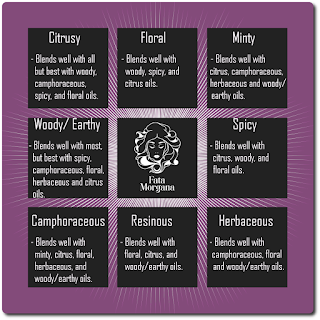I often get asked for recommendations of what to use to keep mosquitoes away - especially in the warmer Summer months, where the days are long and warm, which make people want to be out and about even more than usual.
There are several natural scents that keep Mosquitoes away - and not just the mozzies! I've put together a simple Venn diagram showing what scents are useful as insect repellent for the main 3 insects we deal with in Malta - Mosquitoes, Fleas and Ticks.
Peppermint
Aroma family: Minty
Note: Top
Blends best with: Other Minty aromas, as well as Citrusy, Camphoraceous, Herbaceous, and Woody/Earthy oils.
Lemon
Aroma family: Citrusy
Note: Top
Blends best with: Other Citrusy aromas, as well as Woody/Earthy, Floral, Camphoraceous, and Spicy oils.
Basil
Aroma family: Herbaceous
Note: Top to Middle
Clove
Aroma family: Spicy
Note: Base
Blends best with: Other Spicy aromas, Citrusy, Woody/Earthy, and Floral oils.Geranium
Aroma family: Floral
Note: Middle
Blends best with: Other Floral aromas, Woody/Earthy, Spicy, and Citrusy oils.Citronella
Aroma family: Citrusy
Note: Top
Blends best with: Other Citrusy aromas, Floral, Herbaceous, and Woody/Earthy oils.Eucalyptus
Aroma family: Minty/Camphoraceous
Note: Top
Blends best with: Other Minty & Camphoraceous aromas, as well as Floral, Herbaceous, Woody/Earthy, and Spicy oils.Lavender
Aroma family: Floral
Note: Middle to Top
Blends best with: Other Floral aromas, Resinous, Woody/Earthy, Spicy, and Citrusy oils.Lemongrass
Aroma family: Citrusy
Note: Top to Middle
Thyme
Aroma family: Herbaceous
Note: Top to Middle
Oregano
Aroma family: Herbaceous/ Spicy
Note: Middle
Rose Geranium
Aroma family: Floral
Note: Middle
Juniper
Aroma family: Woody/Earthy
Note: Middle
Rosewood
Aroma family: Floral/Spicy
Note: Middle
Grapefruit
Aroma family: Citrusy
Note: Top
Cedarwood
Aroma family: Woody/Earthy
Note: Base
Tea Tree
Aroma family: Minty/Camphoraceous
Note: Middle
Orange
Aroma family: Citrusy
Note: Top
Scots Pine
Aroma family: Woody/Earthy
Note: Top
Patchouli
Aroma family: Spicy/Woody/Earthy
Note: Base
Neem
Neem oil has a strong garlic/nutty aroma – unpleasant to some but loved by others. A note of caution - Neem oil is not to be used by pregnant people. If you're in doubt or have underlying conditions, do your research first.
This is a guide for use by your average, healthy human being.
What if I don't like essential oils?
Have you ever noticed, whilst sitting around a fire, that you get bitten less? No? Well, mosquitos tend not to like smoke. Few people can realistically light up a fire on a daily basis - so a practical alternative would be incense.
Whilst all forms of incense will help due to the smoke they produce, if we go for the plants we covered above, that would be hitting two proverbial birds with one stone. We do, in fact, carry a variety of incense - in 4 forms: Incense Sticks, Incense Cones, Resin Incense & Backflow Incense Cones.
Ganesha Backflow Incense Burner - Stock Item















